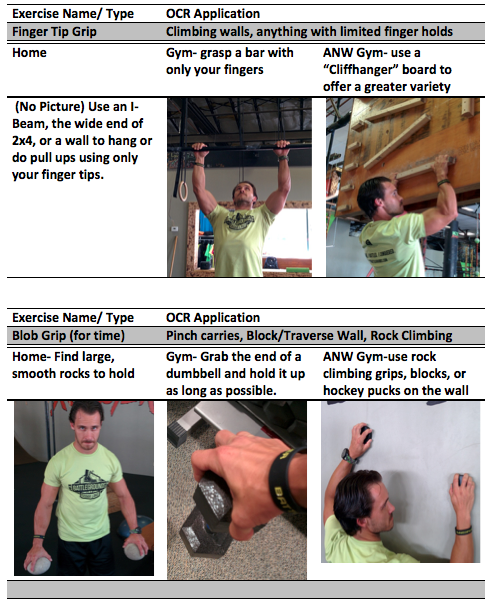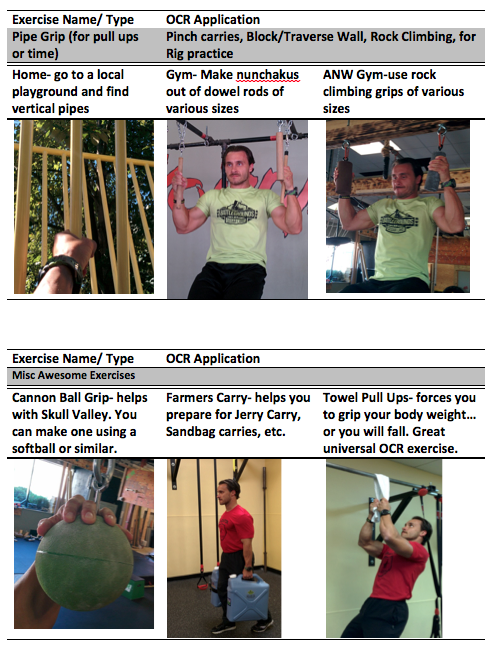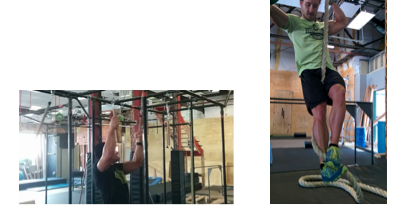
In a sport like obstacle racing, there are many different elements that affect performance during a race. Running speed/pace, recovery, your ability to handle the various terrain, and balance are all important as they are with traditional running races. However, the upper body element in one that sets our sport apart from other forms of racing. If a competitor lacks the ability to pull himself or herself over obstacles then he/she could be in for a tough race. Another form of upper body strength that is becoming more and more important in OCR is grip strength or more specifically grip endurance.
Your ability to grip a rope, pick up and carry a Jerry Can, traverse a block wall, or complete the horrifying Rig all depend on your forearms’ ability to endure this repeated onslaught. Many people misunderstand “grip strength” and how to train it for OCR. Hold on tight, I’m going to blast through various methods using three different location types to try to help this apply to as many racers as possible.
First a little Science: Your forearms are made up of a combination of strong muscles and muscles with high endurance. How your nervous system recruits these fibers is the key. Your forearms also have a high number of motor units (groups of neurons controlling muscles) because your hands require quite a bit of finite control. More motor units usually mean more control. Training your forearms to complete race-related tasks is key. In OCR, we lift heavy stuff, climb walls, ropes, and carry things like water cans. When you practice these over and over your body builds endurance along with the necessary strength. The other thing it does is teach the nervous system HOW to grip all of these different objects more efficiently in order to maintain endurance. This is where one of the most important aspects of your grip training lies… Variety!
Forcing your arms to learn how to grip, carry and hold as many different types of apparatuses as possible will greatly improve your grip during an OCR.
Put your Grip Squeezers down and continue reading for you will find a variety of grip training exercises that you can do: 1) at home, 2) at your traditional gym, 3) at your ANW/ obstacle training gym. Understand that there are so many variations to grip training exercises that I could write an entire chapter on the subject, but the content below will put you on the right path.
Conquering The RIG
One of the “new kids on the block” in OCR, at least here in the US, is The RIG. These are in use at a variety of races including Battle Frog, Spartan Race, and the OCRWC. This machine can be configured numerous ways on the spot making it likely that it will become a mainstay at races around the globe. Rigs often contain ropes, rings, poles, and even the dreaded nunchakus. In order to best prepare yourself for this nightmare, there are few simple things that you must know that will immensely improve your performance on this obstacle.
- Move quickly! Speed is the byproduct of efficient movement. Use your continual momentum to take you to the next phase of the Rig. Coincidently, the longer it takes you the more grip you exhaust.
- When you are having to use your arms as your sole means of movement then try to keep your elbows bent as close to 90 degrees as possible. This will allow you to maximize grip strength and ease your transition to higher pieces.
- Use the low rings and ropes to rest your hands if necessary. The only real way to rest on a rope without knots (especially if your feet are wet) is with an S-Wrap type foot-hold. When used effectively you can essentially stay cinched off all day.
These exercises/ skills all require practice. However, becoming a Grip Master will only improve your performance. If there were a Spiderman in OCR then his name would be Ryan Atkins, and he seems to tackle the obstacles just fine! Have fun!





Leave A Comment